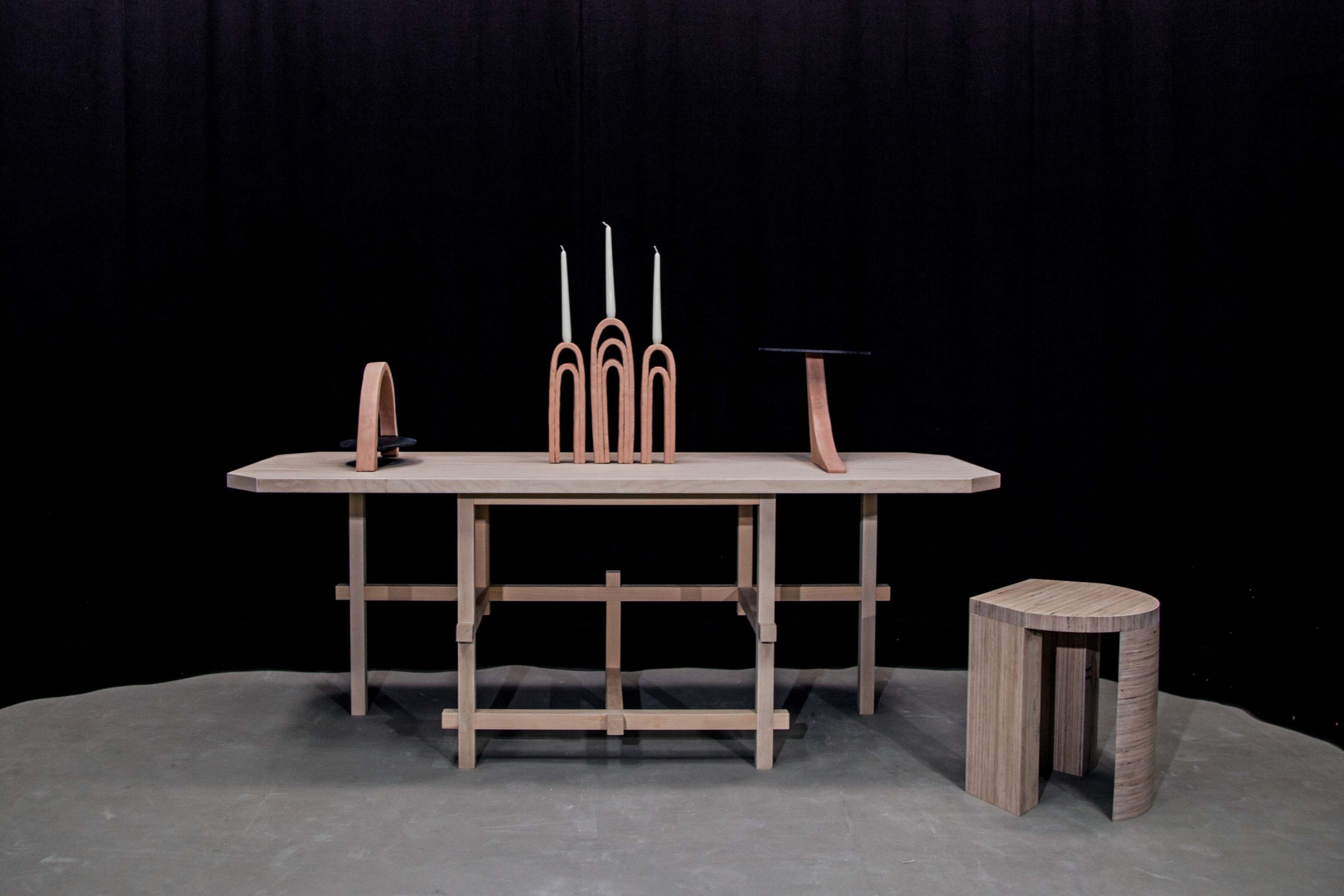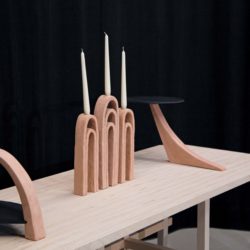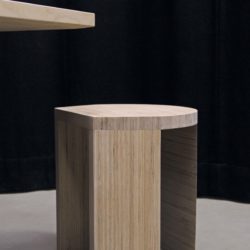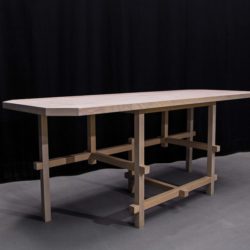Restructuring Order
Description
My Master Thesis is the furniture collection inspired by late-Soviet architecture.What is the Topic?
To this day, many buildings from the Soviet era in the former Soviet countries have been demolished because they had fulfilled their purpose, because no economic claim was made on them anymore or because of an ideological struggle against so-called Soviet thinking. During my life in Georgia, I often felt that my protest and my words did not count for anything when these artifacts were destroyed. Today, photographs often remain the only visual evidence of these surreal structures. For this reason, I wanted to develop my own method to transform these lost forms into smaller, usable objects, so that they could be can live on in them.
Why does it look like this?
In my home country of Georgia, eating together plays a big role. There is even a separate word for it: “Supra” which literally means tablecloth, but it is also used in a figurative sense as a term for a social gathering at the table. The fact that I designed a set of dining tables, stools, and table objects is inspired by this special dining culture. For each piece in the collection, a specific building was selected and an attempt was made to capture the character of the respective building and make it usable. The special features of the architecture are reflected in the objects. I have used sustainable materials such as wood and clay, which are very common in my home country.
What is special?
On the basis of models from late Soviet architecture, an ancient Georgian tradition is transferred into a contemporary, usable variant using traditional crafts. My sketches of the individual buildings increasingly took the form of the following exhibition pieces during the creative process. For example, while retaining the architectural styles, a bus stop became a stool or a monument became a presentation bowl. The resulting collection contains architectural memories of my home country, to which I feel emotionally connected. The buildings that have accompanied and interested me since my childhood can be found in these objects. The furniture resulting from this fusion fulfills its function and stands with each other in a harmonious connection.
What is new?
What is new about my work is the method of transferring architecture into small usable objects.




